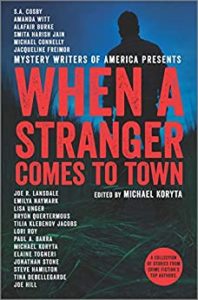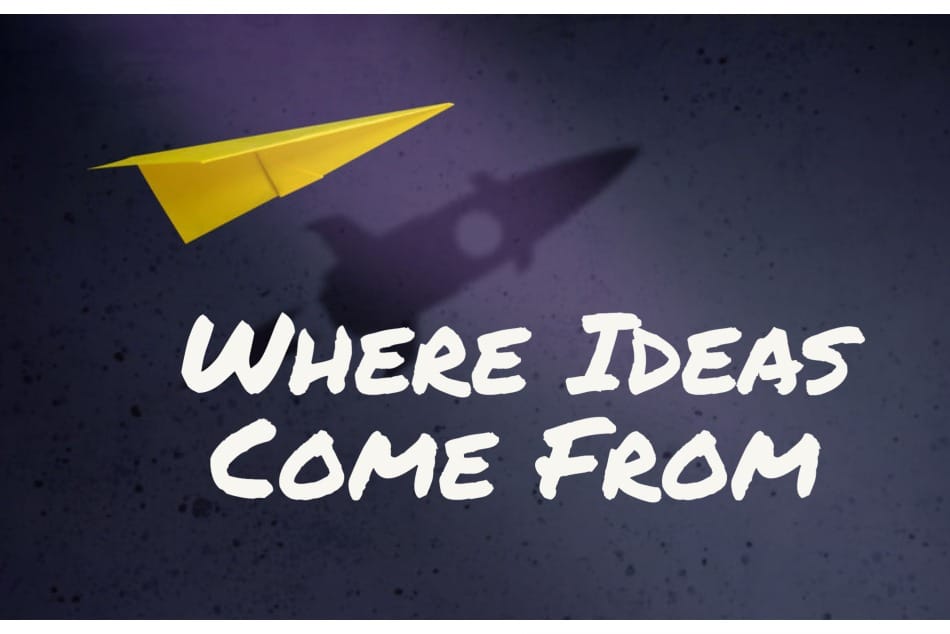Ideas come to us, not us to them; and when we join forces with them, they reward us. The artist and the idea are equal partners in the relationship.
Which I realize sounds totally whack, but hear me out.
Most writers know those moments when everything comes together perfectly. Sometimes this even happens after we conclude our efforts: recently, my seventeen-year-old saw the promo materials for an upcoming anthology featuring one of my stories, and cackled at the release date of April twentieth, or 4/20. Unless you have a teenager, you might not know that 420 is a naughty marijuana reference. When my son explained the joke to me, I said, “Cool. My story is about a guy who creates multiple false identities to rob a marijuana dispensary.”
Coincidence? Yes: a happy accident related to the central idea of my story. My Muse has a sly sense of humor, and this isn’t the first time she’s chucked something like that my way. Maybe it’s a bonus for working well together. I certainly can’t complain, because it made me and my son giggle.
Writers—and doubtless painters, architects, choreographers, and anyone else consistently engaged with creativity—will often say, “It came to me,” or, “I got an idea,” which literally means, “I received an idea.”
We do not take credit for creating concepts, but rather for for arranging them in new ways so as to craft something novel. Indeed, throughout history, creative people have consistently asserted that ideas come from without, not within; and that furthermore, anyone lucky enough to be visited by an idea should engage fully with it in order to find out what the heck it is trying to say.
Charles Dickens declared, “An idea, like a ghost, must be spoken to a little before it will explain itself.”
Lady Gaga, not being a Victorian, put it this way: “When you make music or write or create, it’s really your job to have mind-blowing, irresponsible, condomless sex with whatever idea it is you’re writing about at the time.”
The great minds of history seem to have arrived at a consensus on this notion with no debate whatsoever: ideas come to us—and they come seeking partnership.
In her marvelous book, Big Magic, Elizabeth Gilbert elaborates on the notion that ideas have a reality separate from ours, asserting that “ideas are driven by a single impulse: to be made manifest. And the only way an idea can be made manifest in our world is through collaboration with a human partner.” In other words, they exist independently from us, and seek us out for the purposes of creative symbiosis. Sound familiar? Sound crazy?
From a scientific point of view, this is pure folderol. And yet—who among us has not had that feeling in the midst of joyful work, the feeling of surging forward as everything comes together, the sense that something is pulling us onward like a laughing child eager to show us something extraordinary just over the crest of the wave? Who has not felt the feeling of rushing to that point in time and space where everything just works?
A creative life is one that involves listening to what’s inside you, and what’s outside you, and especially to the sounds those two things make when you knock them together. Sometimes it just doesn’t work no matter how hard you (both?) try. Other times, though, you and the idea join hands and work together, each enriching the other, making mundane magic as you go.
At least, that’s what I think. What do you think? Let’s talk about it on the Career Authors Facebook page.

 Tilia Klebenov Jacobs is the bestselling author of two crime novels, one middle-grade fantasy book, and numerous short stories. She is a judge in San Francisco’s Soul-Making Keats Literary Competition, and a board member of Mystery Writers of America-New England. HarperCollins describes her as one of “crime fiction’s top authors.” Her short story “Perfect Strangers” appears in the upcoming MWA anthology When A Stranger Comes to Town. Tilia has taught middle school, high school, and college; she also teaches writing classes for prison inmates. She lives near Boston with her husband, two children, and pleasantly neurotic poodle.
Tilia Klebenov Jacobs is the bestselling author of two crime novels, one middle-grade fantasy book, and numerous short stories. She is a judge in San Francisco’s Soul-Making Keats Literary Competition, and a board member of Mystery Writers of America-New England. HarperCollins describes her as one of “crime fiction’s top authors.” Her short story “Perfect Strangers” appears in the upcoming MWA anthology When A Stranger Comes to Town. Tilia has taught middle school, high school, and college; she also teaches writing classes for prison inmates. She lives near Boston with her husband, two children, and pleasantly neurotic poodle.





